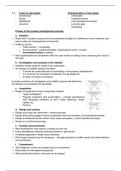Summary
Summary for final exam - REUD part 7U4X0 / 7U1B10
- Course
- Institution
This document represents a summary of all lectures of the 7U4X0 course, part of the Real Estate and Urban Development. It includes all the necessary information, each with enough details provided.
[Show more]












